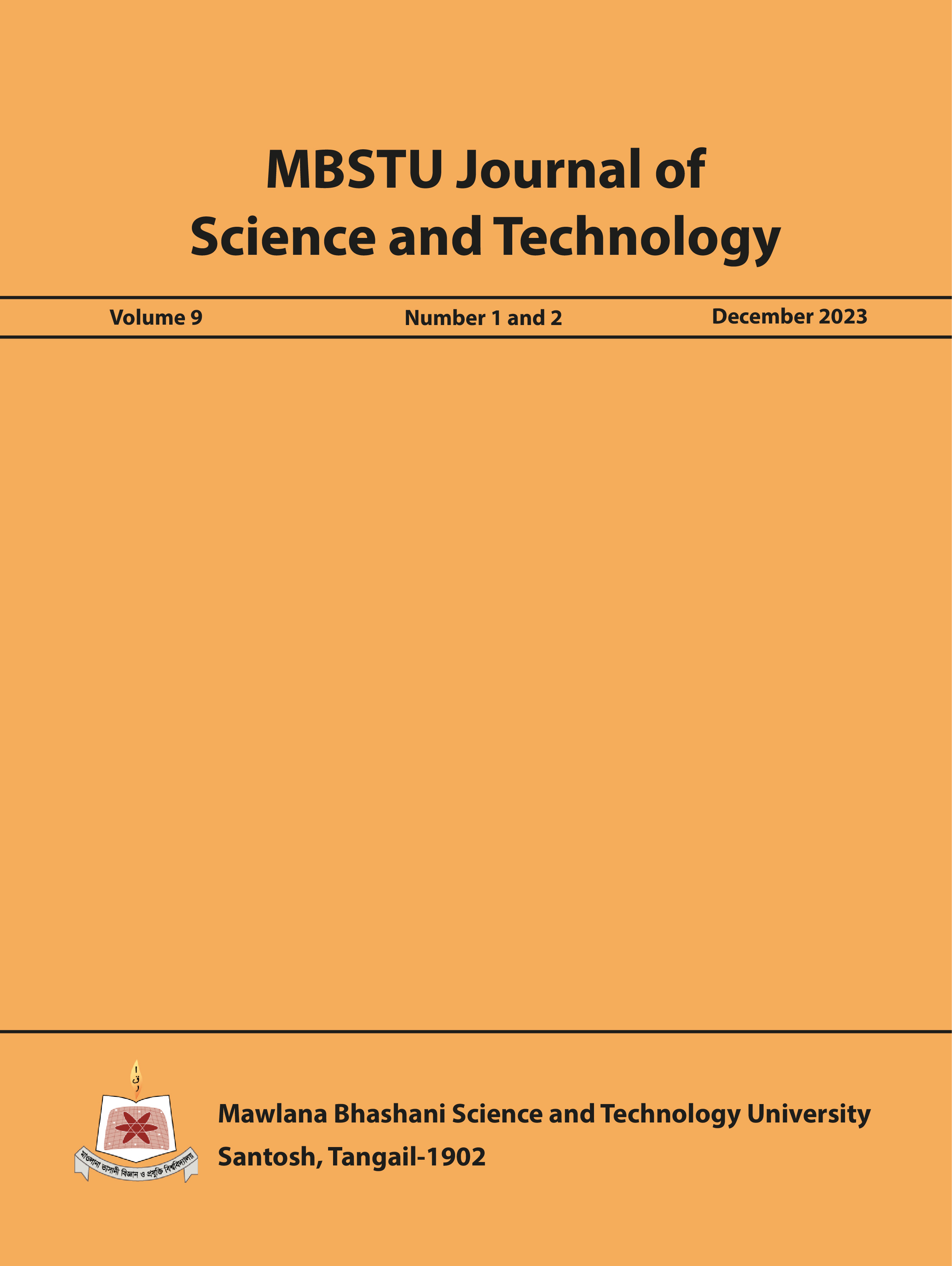Identifying the Determinants of Awareness About HIV/AIDS Among Ever Married Women in Bangladesh
DOI:
https://doi.org/10.69728/jst.v9.16Keywords:
Generalized Linear Model, Chi-Square Test, HIV/AIDS, Odds RatioAbstract
The HIV (human immunodeficiency virus) infections recently emerged as a public health issue across the globe and particularly in developing countries. Knowledge and positive attitudes are essential for the prevention and treatment of HIV/AIDS. This study aims to identify the determinants of awareness about HIV/AIDS among ever-married women in Bangladesh. The 2014 Bangladesh Demographic and Health Survey data were utilized for this purpose. Univariate, bivariate and multivariate analyses have been performed to analyze the data. This study showed that about 70% of ever-married women heard about HIV/AIDS. Chi-square test of independence suggested that the age of respondents, place of residence, division, respondents’ education, wealth index, mass media exposure, working status of respondents and husband’s education are significantly associated with awareness about HIV/AIDS of women in Bangladesh. Women of Dhaka division are found more likely to have knowledge about HIV/AIDS than women of other divisions. Middle-class and Rich women are more likely to have awareness about HIV/AIDS than poor women in Bangladesh. The odds ratio indicated that HIV/AIDS awareness among women increases with the increase of schooling and age. This study recommends education and mass media campaigns as strong determinants of HIV/AIDS awareness among women in Bangladesh.
References
Asaduzzaman, M., Higuchi, M., Sarker, M. A. B., & Hamajima, N. (2016). Awareness and knowledge of HIV/AIDS among.married women in rural Bangladesh and exposure to media: A secondary data analysis of the 2011 Bangladesh demographic and health survey. Nagoya Journal of Medical Science, 78(1), 109–118.
Azim, T., Chowdhury, E. I., Reza M., Faruque M. O., Ahmed, G., Khan, R. Rahman, M., Parvez M. M., Jana S., & Strathdee S. A. (2008). Prevalence of infections, HIV risk behaviors and factors associated with HIV infection among male injecting drug users attending a needle/ syringe exchange program in Dhaka, Bangladesh. Subst Use Misuse, 43(14), 2124-2144.
Hosain, M. T., & Islam, M. Z. (2016). Factors affecting knowledge, attitudes and behavior of HIV/AIDS: A study on Bangladesh. Australian Journal of Business Science Design & Literature, 09(02).
Hossain, M., Mani, K. K., Sidik, S. M., Shahar, H. K., & Islam, R. (2014). Knowledge and awareness about STDs among women in Bangladesh. BMC Public Health, 14(1), 775.
Khan, A. (1997). Knowledge on AIDS among Female Adolescents in Bangladesh: Evidence from the Bangladesh Demographic and Health Survey Data. Centre for Health and Population Research: 20(2), 130-137.
Khanam, P. A., Khuda, B., Khane, T. T., & Ashraf, A. (1997). Awareness of sexually transmitted disease among women and service providers in rural Bangladesh. International Journal of STD & AIDS, 8(11), 688-696.
Mamtaz, A. (1999). Response to the Pandemic in Bangladesh. Journal of Preventive and Social Medicine (JOPSOM), 18(1), 74-83.
Ministry of Health and Family Welfare (2019). Directorate General of Health Services.National AIDS/STD Programme.Ministry of Health and Family Welfare, Government of Bangladesh, Bangladesh.
Ministry of Health and Family Welfare (MOHWF). (2011). Journal of National HIV Serological Surveillance. National AIDS/STD Program, Directorate General of Health Services.
NIPORT (2014). Bangladesh Demographic and Health Survey (BDHS), National Institute of Population Research and Training (NIPORT), Dhaka,
Bangladesh.
Rahman, M. S., & Rahman, M. L. (2007). Media and education play a tremendous role in mounting AIDS awareness among married couples in Bangladesh. AIDS Research and Therapy, 4, 10-17.
Rahman, M. M., Kabir, M., & Shahidullah, M. (2009). Adolescent knowledge and awareness about AIDS/ HIV and factors affecting them in Bangladesh. Journal of Ayub Medical College, Abbottabad, 21(3), 3–6.
Sarkar, K., Bal, B., Mukherjee, R., Chakraborty, S., Niyogi, S. K., Saha, M. K., & Bhattacharya, S. K. (2006). Epidemic of HIV coupled with hepatitis C virus among injecting drug users of Himalayan West Bengal, Eastern India, bordering Nepal, Bhutan, and Bangladesh. Substance use and Misuse, 41(3), 341–352.
UNAIDS (2019). World AIDS Day Report, Joint United Nations Program on HIV/AIDS, Switzerland.
UNAIDS (2018). Asia and Pacific. Retrieved from http://www.unaids.org/en/regionscountries/asiaandpacific.
UNAIDS (2011). World AIDS Day Report, Joint United Nations Program on HIV/AIDS, Switzerland.
World Health Organization, Regional Office for South-East Asia. (2012). HIV/AIDS in the South-East Asia region: Progress report 2011. http://www.searo.who.int/entity/hiv/ documents/hiv-aids_in_south-east_asia.pdf.
Yaya, S., Bishwajit, G., Danhoundo, G., Shah, V., & Ekholuenetale, M. (2016). Trends and determinants of HIV/AIDS knowledge among women in Bangladesh. BMC Public Health, 16(1), 812.
Downloads
Published
Issue
Section
License
Copyright (c) 2023 Deluar J. Moloy, Arzo Ahmed, Mashfiqul Huq Chowdhury, Md. Saiful Islam (Author)

This work is licensed under a Creative Commons Attribution 4.0 International License.









